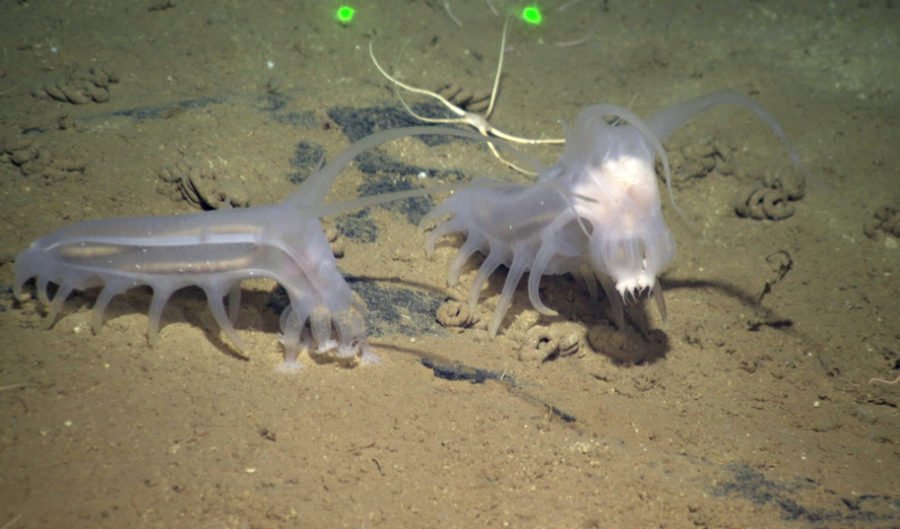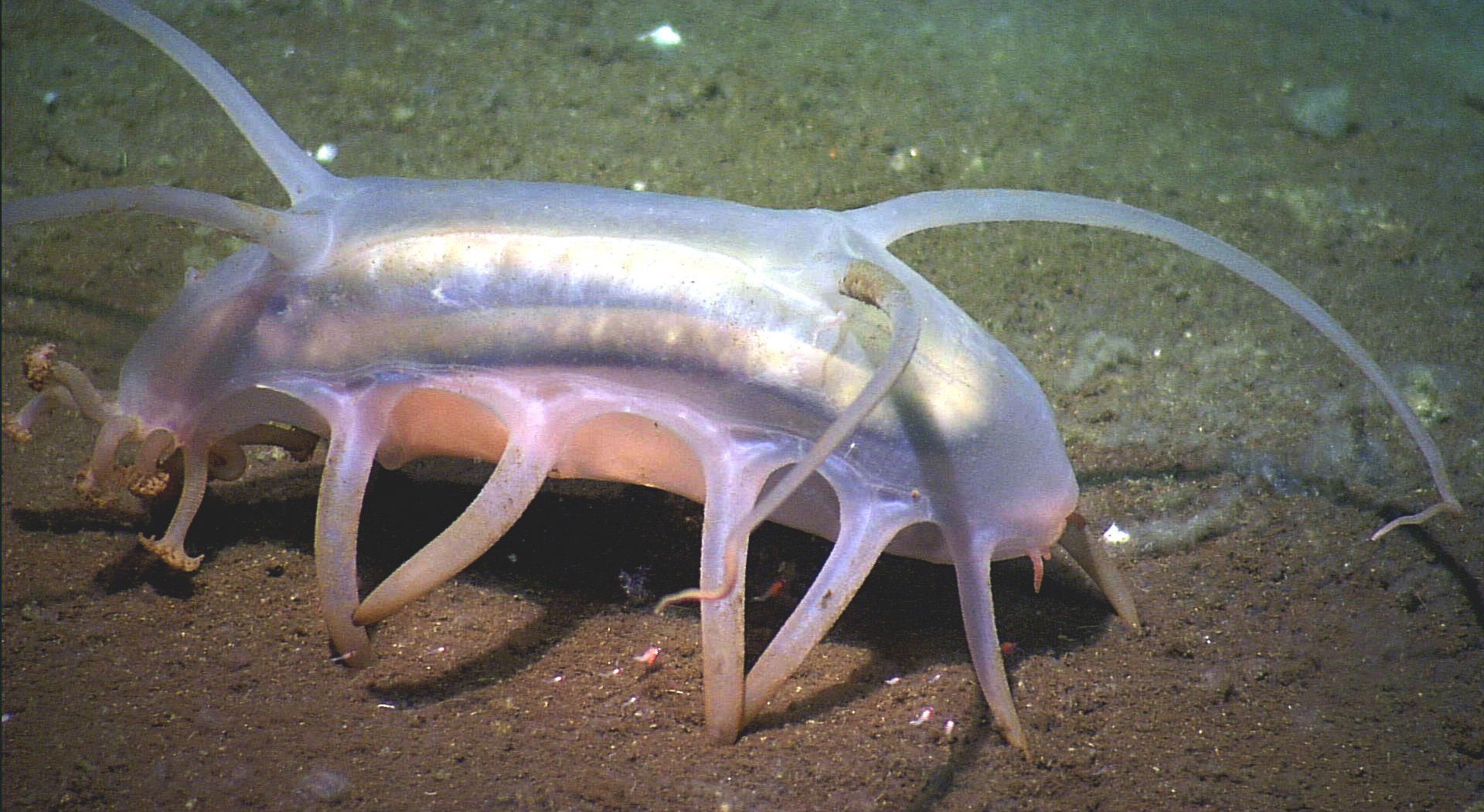Sea pigs are the aliens of the sea

Bec Crew
Bec Crew

THESE ADORABLE little monsters trawl the sea floor for decaying plant and animal matter, hoovering up dead tissue with a mouth full of tentacles. If there’s a carcass to be cleared away, you can be sure that a herd of dutiful sea pigs will be there to get to work.
Members of the family Elpidiidae, sea pigs are a type of deep sea-dwelling sea cucumber – fat, leathery bottom-feeders that come in an amazing array of colours and shapes. (If you think sea pigs are weird, check out this crimson beauty called the Spanish dancer, and biologists nicknamed this one the “headless chicken fish”.)
Sea pigs can congregate in enormous numbers when there’s a meal to be had – biologists have spotted herds of 300-600 individuals, and weirdly enough, they all face in the same direction, presumably to take advantage of the detritus floating in the current.
In some areas, sea pigs comprise more than 95 percent of the total weight of animals on the deep-sea floor.

(Image Credit: Oregon State University)
They’re found worldwide, including off the southwest coast of Australia, but despite how common they are, you’ll never spot one in the wild.
Sea pigs are real-life abyss-walkers, found at depths of up to 6 km below the surface in the deepest part of the Abyssal Zone of the ocean.
One of the most distinctive and unique features of the sea pig is its many large ‘legs’ which it uses to march across the mud of the Abyss.
Those two slender tentacles branching from its head might look like antennae, but they’re just another pair of feet – and are thought to either help propel the animal through the ocean, or could be an extra set of sensory organs.
Sea pigs might remind you of a water bear, but these things aren’t microscopic – they can grow to 15 cm long. And there’s one creature in particular that’s grateful for all that surface area – baby king crabs.
Late last year, researchers from Monterey Bay Aquarium Research Institute (MBARI) in California spotted young crabs hitching a ride on the bellies of sea pigs to hide from predators.
They report that virtually all (96 percent) of the young crabs they saw in deep muddy areas were clinging to sea pigs because without caverns or corals to hide in or under, they had nowhere else to hide. Here’s the footage of sea pigs being unwitting Good Samaritans:
And here’s a great close-up of another sea pig:

